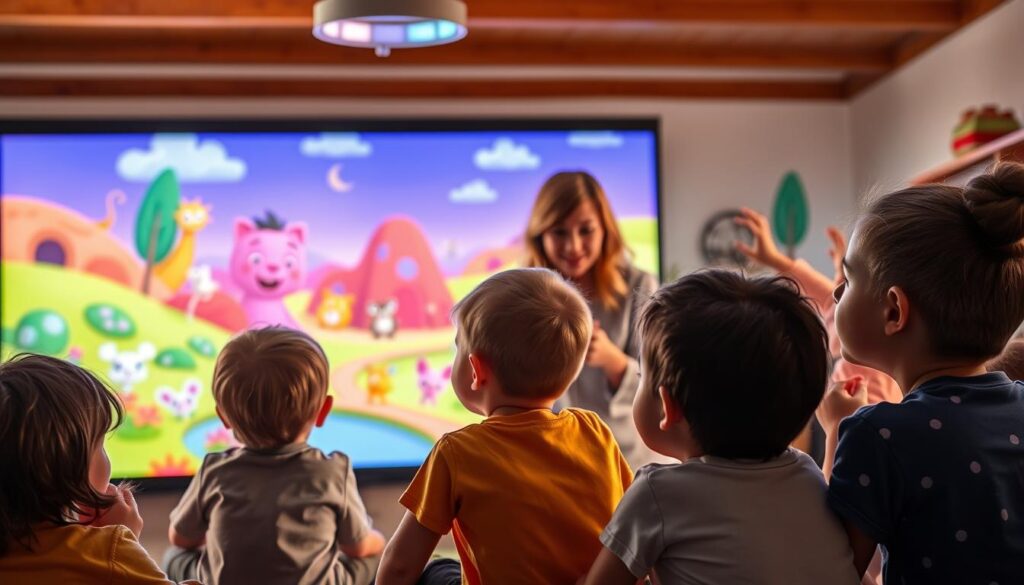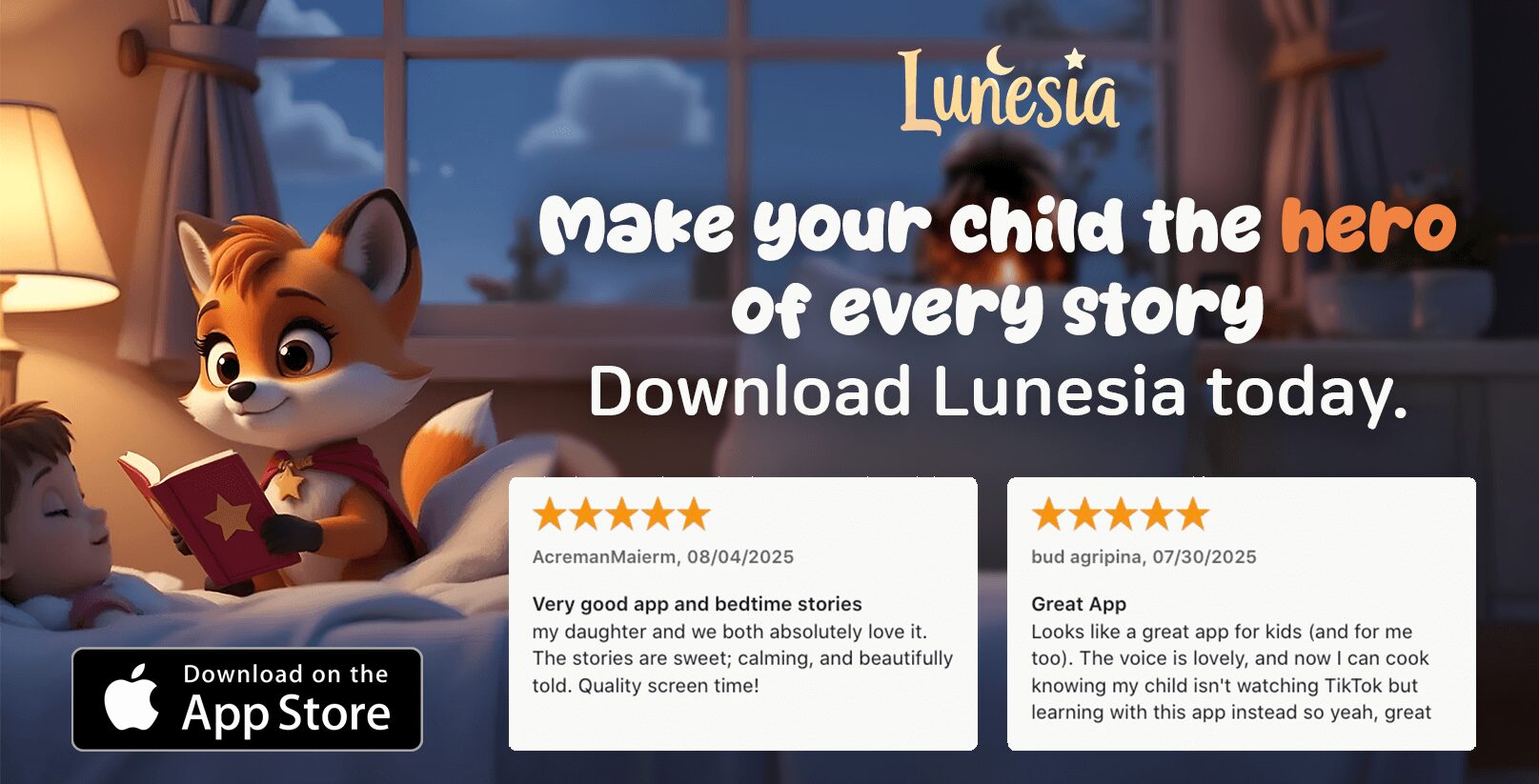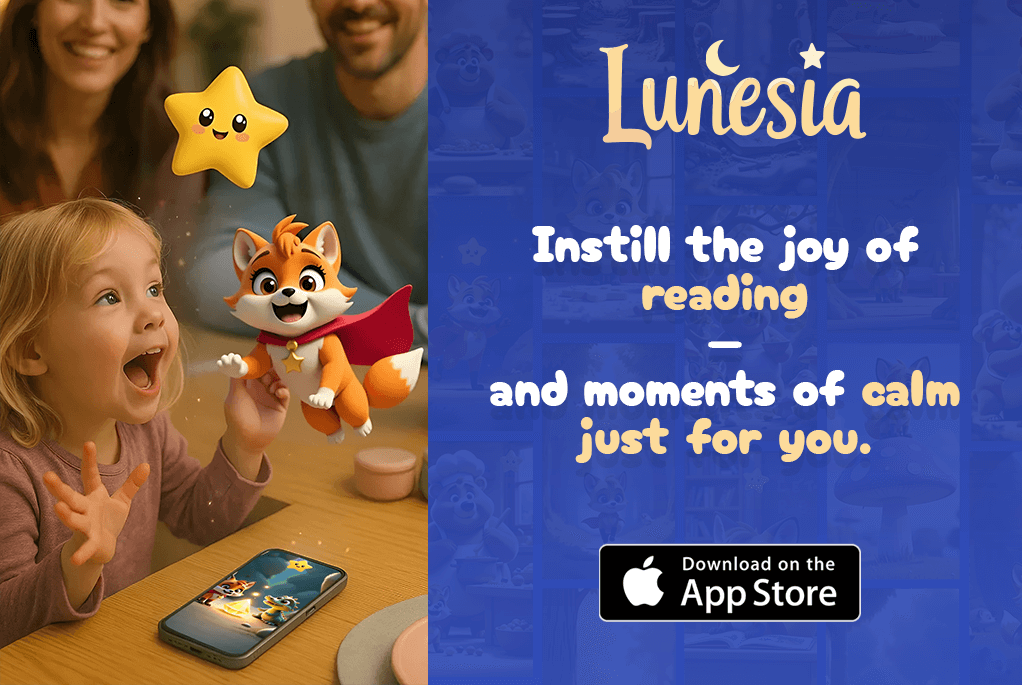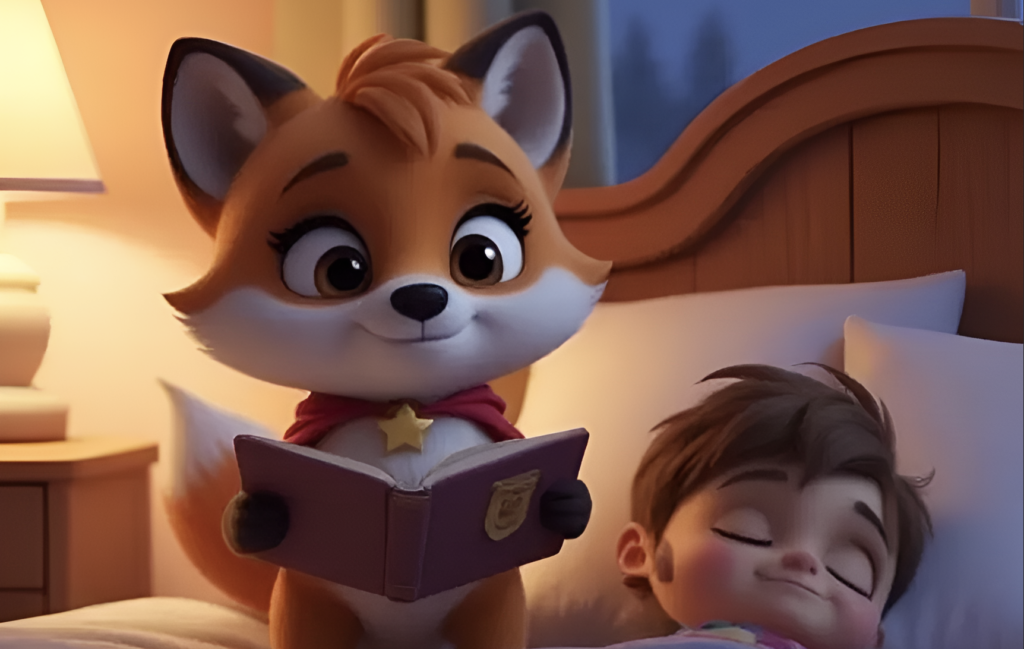As a mom and literacy expert, I’ve seen firsthand how animated stories can transform a reluctant reader into an enthusiastic bookworm. The right platform can make all the difference in fostering a love for books and language in young children.
In today’s digital age, platforms like Lunesia are turning bedtime into a magical adventure, making children the heroes of their own tales. But how does it compare to Vooks? In this article, we’ll explore how these two leading platforms approach early literacy development through animation, examining their unique features and content libraries.
By comparing these platforms, we aim to help you understand which one might be the better investment for your family’s literacy journey, bringing the world of reading to life for your child.
The Role of Animation in Early Literacy Development
In the world of early literacy, animation plays a crucial role in capturing children’s imagination and enhancing their reading skills. Animation brings stories to life, making them more engaging and interactive for young learners.
By incorporating animation into reading materials, children are more likely to develop a love for reading that can last a lifetime. For instance, interactive story apps utilize animation to create an immersive experience, making reading a fun and enjoyable activity.
How Animated Stories Support Reading Skills
Animated stories support reading skills by providing a visual representation of the text, helping children connect the narrative to the written words. This multi-sensory approach can enhance comprehension and retention. As children watch characters come to life on the screen, they become more invested in the story, feeling as though they’re part of a magical world.
Benefits of Interactive Elements for Learning Engagement
Interactive elements in animated stories significantly boost learning engagement. By allowing children to make choices that affect the story’s outcome, these elements create a sense of agency and fun. For example, features like clickable vocabulary words and character dialogues help children feel like they’re actively participating in the story, rather than just passive observers. Over several days, this interactive engagement can lead to improved literacy skills as children become more confident in their reading abilities and more eager to explore new stories with their friends.
To explore more interactive reading experiences, you can visit Lunesia’s website, which offers a range of engaging animated stories designed to foster early literacy skills.
Understanding Early Literacy Needs for Children Ages 2-8
As a parent, understanding the early literacy needs of your child between the ages of 2 and 8 is crucial for their reading development. During this period, children undergo significant developmental milestones that lay the foundation for their future reading skills.
Key Developmental Milestones in Reading
Children typically progress through various stages of reading development, from recognizing letters and understanding basic story structures to more complex comprehension skills. It’s essential to identify these milestones to provide appropriate support.
What Parents Should Look for in Digital Reading Tools
When selecting digital reading tools, consider the following factors:
- Age-appropriate content with adjustable difficulty levels to grow with your child.
- A balance between entertainment and educational value, avoiding excessive stimulation.
- Effective language development approaches, including new vocabulary, support for multiple languages, and pronunciation guides.
- Diverse storytelling quality and content, exposing children to various narrative styles and cultural perspectives, including fantasy stories that can spark their imagination and broaden their view of life.
- Features like highlighted words during narration and adjustable reading speeds that enhance the reading experience in a meaningful way.
For more insights, you can explore top children’s story apps that are making a difference in early literacy, potentially introducing your child to new books and enhancing their language skills.

Vooks: Animated Storybooks Platform
Vooks is an innovative platform that offers animated storybooks for children, making reading a fun experience. It’s designed to captivate young readers and help them develop their literacy skills.

Platform Overview and Features
Vooks offers a comprehensive library of animated storybooks, coupled with a user-friendly interface that makes it easy for children to navigate and enjoy their reading experience.
Content Library and Quality
The platform boasts a vast collection of high-quality, engaging storybooks that cater to various age groups and reading levels.
User Interface and Accessibility
Vooks is designed to be accessible on multiple devices, ensuring that children can enjoy their favorite stories anywhere, anytime.
Educational Approach and Literacy Benefits
Vooks’ animated storybooks are crafted to support early literacy development by making reading a fun and interactive experience. The platform’s content is designed to foster a love for reading in children.
Pricing and Subscription Options
Vooks offers a straightforward subscription model with the following options:
- Vooks offers a straightforward subscription model with monthly ($5.99) and annual ($49.99) options, representing a significant savings for families who commit to the yearly plan.
- New subscribers can test the platform with a 7-day free trial that provides full access to all features and content.
- For educators, Vooks offers special pricing and free access programs, particularly during challenging periods like the pandemic.
- The subscription includes unlimited access to the entire library for up to 4 user profiles.
- Unlike some competitors, Vooks doesn’t offer a free tier beyond the trial period, but they do occasionally provide free access to select titles for special events or to celebrate fun reading holidays.
By offering a fun and engaging way to read, Vooks makes it easier for children to develop their literacy skills, making it a valuable tool for parents and educators alike, as of the latest date.
Lunesia: Interactive Story App
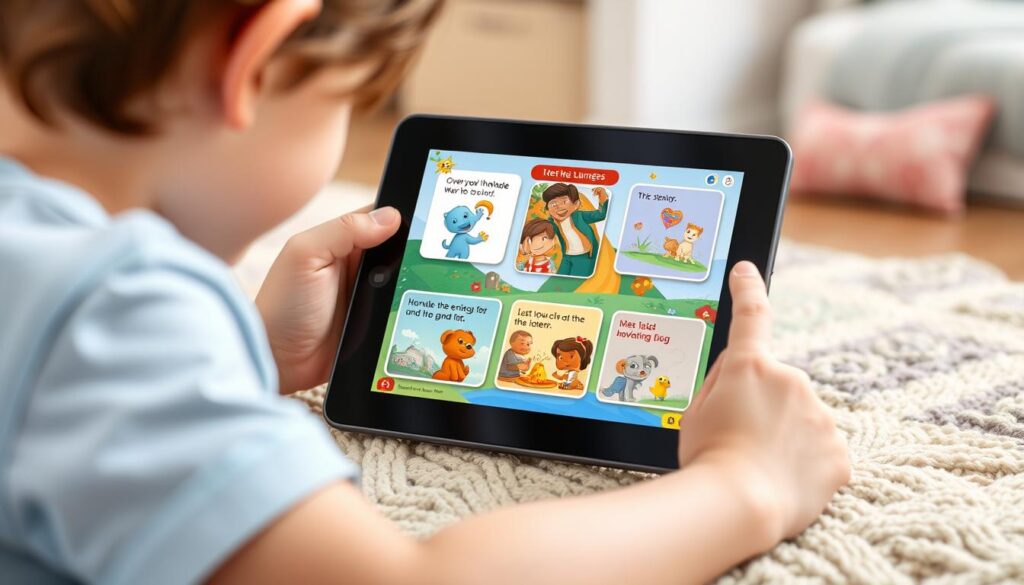
Lunesia is more than just an interactive story app; it’s a gateway to a world of imagination and learning. Our children’s stories are designed to be both entertaining and educational, subtly weaving in age-appropriate lessons that foster a love for reading and learning.
Platform Overview and Features
Lunesia offers a unique approach to storytelling with its interactive features and high-quality content. The platform is designed to be engaging and easy to use, making it perfect for children aged 2-8.
Interactive Storytelling Mechanics
The app’s interactive storytelling mechanics allow children to engage with the story in a hands-on way, enhancing their reading experience and encouraging active participation.
Content Library and Quality
Lunesia boasts a diverse content library, featuring stories that range from simple tales for younger children to more complex narratives for older kids. The content is carefully curated to ensure it’s both fun and educational, with themes like fantasy captivating young imaginations.
Educational Approach and Literacy Benefits
Lunesia’s educational approach focuses on developing key literacy skills, including vocabulary, listening skills, and critical thinking. By making reading interactive and fun, Lunesia helps children develop a lifelong love for books and learning.
Pricing and Subscription Options
Lunesia offers a freemium model, allowing families to try the platform before committing to a subscription. The premium subscription unlocks the full library and features, with options for monthly or annual payments. It’s also ideal for days on the go, as downloaded stories can be accessed offline.
Key benefits include a 14-day free trial, family sharing available for up to 6 family members, and occasional seasonal promotions and themed content bundles.
Vooks vs Lunesia: Direct Comparison
When it comes to choosing between Vooks and Lunesia for your child’s early literacy development, understanding their differences is crucial. Both platforms offer unique features that cater to different needs and preferences.
Content Quality and Variety
Vooks and Lunesia both boast a wide range of animated storybooks. Vooks features a simpler interface, closely mimicking traditional book reading, making it accessible to very young children. Lunesia, on the other hand, offers interactive stories that make reading a personal journey for kids.
Interactive Features and Engagement
Lunesia’s interactive format requires digital literacy and decision-making, potentially creating a steeper learning curve but offering growth potential. Vooks provides a more straightforward reading experience.
Educational Value for Different Age Groups
For parents, Vooks offers robust tracking and monitoring tools, providing detailed reading logs and progress reports. This feature is invaluable for understanding a child’s reading habits and preferences during early childhood.
Ease of Use for Children and Parents
Both platforms offer parental controls and safe environments. Vooks has an edge with its dedicated smart TV apps, creating a communal viewing experience. As one expert notes, “Digital tools like Vooks and Lunesia are transforming story time into play time, making reading a fun experience for kids.”
“Unlike passive ebooks, Lunesia offers meaningful choices that make each story for kids a personal journey.”
Conclusion: Which Platform Best Supports Early Literacy?
In the world of digital literacy, Vooks and Lunesia stand out as prominent players, but which one is right for your child? The ideal choice depends on your child’s age, learning style, interests, and your family’s specific literacy goals.
Vooks may be the better choice for families seeking a digital experience that closely mirrors traditional reading, with a focus on established children’s literature. On the other hand, Lunesia might be preferable for families looking to engage reluctant readers or provide a more interactive experience that makes literacy fun.
Consider starting with the free trials of both platforms to observe which one captures your child’s interest more effectively. The magic of early literacy development often happens in the moments of connection between caregiver and child. Both platforms can enhance these moments, making reading a joyful part of daily life.
FAQ
How can I help my child develop a love for reading at an early age?
You can foster a love for reading in your child by introducing them to engaging stories, such as animated storybooks or interactive stories, that capture their imagination and make reading a fun experience. Using digital tools like animated stories can be a great way to start.
What are the key benefits of using animated stories for early literacy development?
Animated stories can support reading skills by making the story more engaging and interactive. They can help children develop their language skills, imagination, and comprehension by bringing the story to life in a way that’s both entertaining and educational.
At what age should I start using digital reading tools for my child?
Children can benefit from digital reading tools from as early as 2 years old. At this age, they can start to understand simple stories and engage with interactive elements. As they grow, these tools can continue to support their reading development.
How do I choose the right digital reading platform for my child?
When choosing a digital reading platform, consider the content quality, variety, and how interactive it is. You should also think about your child’s age and what type of stories they enjoy. Some platforms offer a free trial, which can be a great way to see if it’s a good fit for your child.
Can digital reading tools replace traditional reading methods?
Digital reading tools can be a valuable addition to traditional reading methods, but they shouldn’t entirely replace them. A balanced approach that includes both digital and traditional reading can provide a well-rounded reading experience for your child.
How can I track my child’s progress with digital reading tools?
Many digital reading platforms offer features that allow you to track your child’s progress, such as the number of books they’ve read or their reading level. You can use this information to understand their reading habits and identify areas where they might need extra support.
Are there any concerns about screen time when using digital reading tools?
Yes, screen time is a valid concern. To manage this, you can set limits on how long your child spends on digital reading tools each day. Many devices also have built-in features to help you monitor and control screen time, ensuring a healthy balance between digital reading and other activities.
Can digital reading tools help my child if they have reading difficulties?
Digital reading tools can be particularly helpful for children who struggle with reading. Many platforms offer features like reading aloud, where the story is read to the child, or interactive elements that can help them stay engaged and build their confidence in reading.
